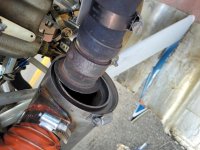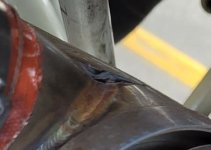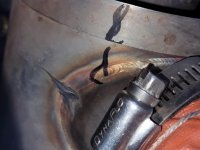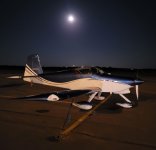jj13
Active Member
The exhaust pipe connection to the heat muff separated on takeoff. Causing elevated c02 and burning the inside of the cowling. The c02 level was detected by a Home Depot c02 detector which only goes to 999ppm so I don't know what the actual level was. I am very glad I had that c02 detector in the plane. I was able to get back to the airport quickly with minimal damage to the cowling. I did feel light headed, but I'm not sure if that was just the stress of the moment seeing the 999s on the screen. I believe exhaust breaks a rare but I can now see how they can be very impactful if unable to land quickly.








